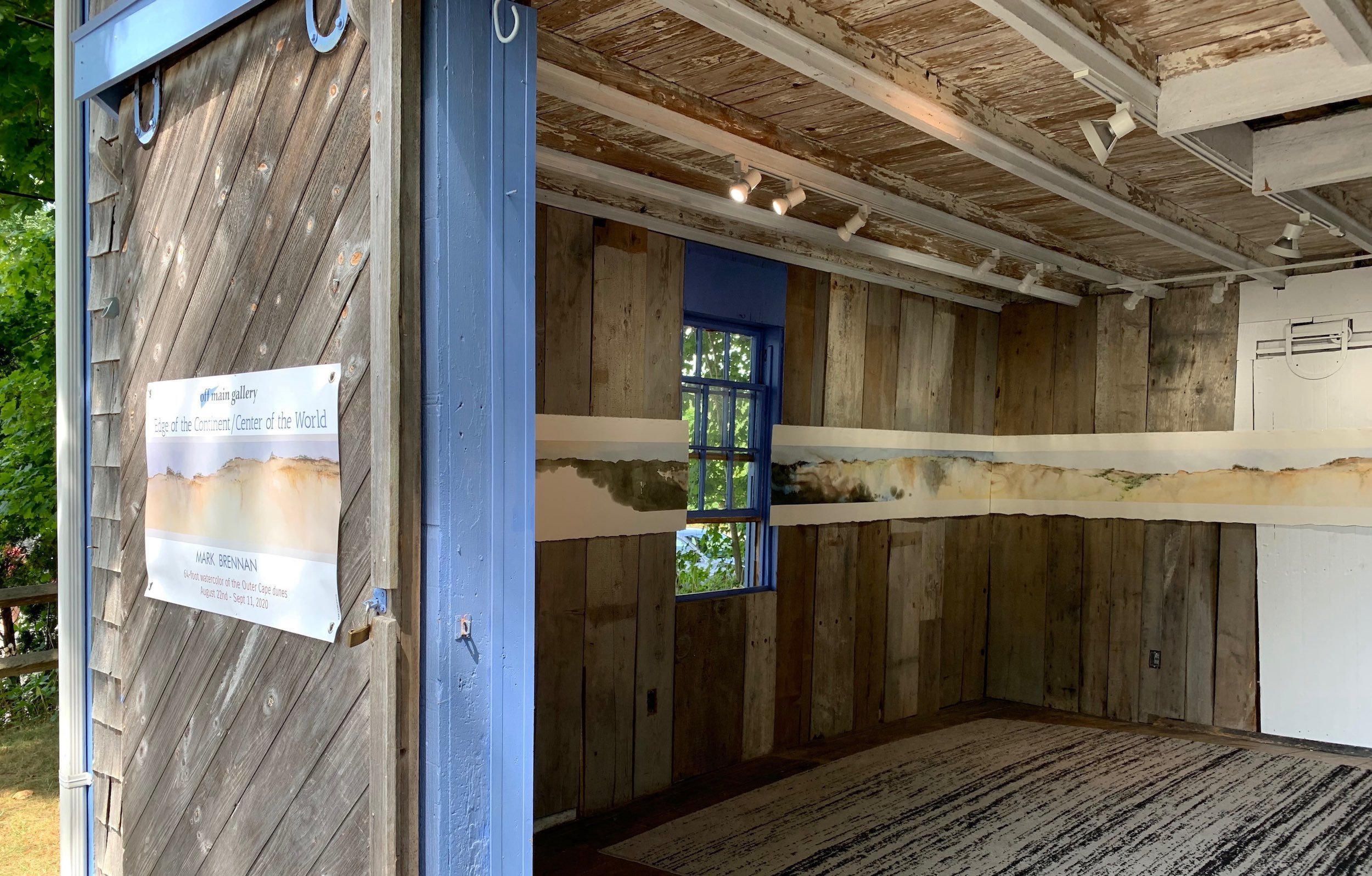Non-neutral Exhibition Spaces
Increasingly I’m drawn to exhibiting work in “non-neutral” spaces, venues other than white gallery cubes. These include a Neo-Gothic Catholic Church (the Church of St. Paul the Apostle, New York’s largest aside from St. Patrick’s Cathedral), an 1870 repurposed New England barn, and a massive raw concrete boathouse on the Gowanus Canal. Instead of finding the idiosyncracies of such spaces obstacles, they can serve as opportunities, to become prominent voices partnering in the exhibit. This can happen aesthetically, as the antique barnwood walls of the old Off Main Gallery complimented the local landscape in Edge of the Continent/Center of the World (2020), as well as allowing the white paper and bright colors of the picture to stand out against the aging woodwork. Or the venue can serve as a contrast to the artwork, as the brutalist architecture of the boathouse created a foil for the elegantly framed paintings in Celebrate Being Alive/Remember Those Who Are Not (2021).
Most interesting, however, is when the function or identity of the venue is engaged in the presentation of the artwork. I was given the opportunity to curate two shows at the Church of St. Paul. With Brothers and Sisters: Islamic Art/Christian Space (2016), I paired the Islamic artwork with features of the church that related in some way to the work on display. Daniel Nelson’s shrine dedicated to Maryam (as the Virgin Mary is known in the Qur’an), for example, was set inside the Annunciation Chapel of the church. The chapel features painting and sculpture commemorating the angel Gabriel (known as Jibril to Moslems) visiting Mary, an event that Nelson’s work cites as chronicled in Sura 3:045 and Sura 19:016 of the Qur’an. Shahzia Sikander, in addition to showing work collaboratively with writer Ayad Akhtar, displayed a video projection about the gopi, girls who herd cows in Hindu mythology. This projection appeared in the St. Agnes Chapel, dedicated to a young Roman martyr associated with the lamb and is the patron saint of young girls and virgins. In the exhibit Respect!, co-curated with Michael Berube in 2017, artists showed work honoring people of a “tribe” other than their own. Photographer Timothy Greenfield Sanders, a straight male, exhibited larger than lifesize portraits of transgender people, a challenging topic for much of the Catholic community. Two artists, a Palestinian and an Israeli, collaborated on a large installation that they opted to exhibit anonymously for fear of violent retribution from their respective communities. In fact, the pastor of the church received an avalanche of hate mail in addition to the compliments from most of his own parish, as a result of these exhibits, particularly the former, and I admire his extreme courage and integrity and feel a deep debt of gratitude to him for supporting these exhibits.




